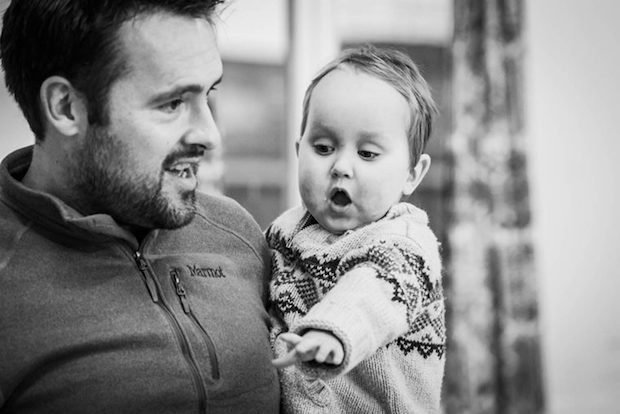”We hope that Dexter’s case will offer other suffering families similar reassurance that cutting-edge technology, such as 3D printing, can help surgeons better treat their loved ones.”
At Guy’s and St Thomas’ NHS Foundation Trust in London, surgeons have successfully used 3D printing to save a two-year-old’s life during a complicated and risky kidney transplant.
For this particular case, it was clear before Dexter was even born that he would need a new kidney and due to complications from his illness, the two-year-old has only able to eat with the help of a feeding tube.
His father was the perfect match as a donor, but there were two key challenges. First, the kidney was much larger than that of the average adult male. Secondly, for a small 10 kilogram baby, receiving an abnormal large kidney was difficult to plan. This made the surgery risky and difficult, but with the help of 3D printing technology they were able to plan the procedure without any complications.
The Guy’s and St Thomas’ Foundation Trust is one of the largest NHS trusts in the UK, and surgeons across the trust have started using Stratasys multi-material printing for planning operations. Surgeons decided to 3D print Dexter’s abdomen and the new kidney with a printer from Tri Tech 3D making it the first Trust in the world to use 3D printed models to pre-plan the successful transplantation of an adult kidney into a small child with anatomical complexities.
3D printed model of Dexter’s abdomen next to a 3D model of his father’s kidney.
“Using our 3D printer, we worked in collaboration with Nick Byrne and his team – clinical scientists from our medical physics department who specialize in medical imaging. They converted patient CT scans into anatomically accurate, multi-material 3D models. These helped us appreciate aspects such as depth perception and space within the baby’s abdomen, which can often be difficult to ascertain when looking at conventional imaging,” explains Mr Chandak. “The ability to print a 3D model of the patient’s anatomy in varying textures, with the intricacies of the blood vessels clearly visible within it, enables us to differentiate critical anatomical relations between structures. The flexible materials also allowed us to better mimic the flexibility of organs within the abdomen for simulation of the surgical environment.”
Anaesthesia for a longer period of time for a young baby with his condition can create certain unnecessary complications. With 3D models, the length of the procedure and surgical exploration can be reduced, so that surgeons can carefully plan and determine optimal surgical approaches. In Dexter’s case, the 3D models were also in the operation room on the day of the surgery, and reviewed by Mr Nicos Kessaris, the consultant transplant surgeon at Guy’s and St Thomas NHS Foundation Trust, to assess the best way the donor kidney would lie and fit into his abdomen.
Emily Clark, Dexter’s mother, comments, “Since the transplant, Dexter is a changed boy, eating solid food for the very first time. We always knew the operation would be complicated but knowing that the surgeons had planned the surgery with 3D models that matched the exact anatomy of my husband’s kidney and son’s abdomen, was extremely reassuring. We hope that Dexter’s case will offer other suffering families similar reassurance that cutting-edge technology, such as 3D printing, can help surgeons better treat their loved ones.”
Michael Gaisford, Stratasys’ Director of Marketing for Stratasys Healthcare Solutions, concludes: “Guy’s and St Thomas’ NHS Foundation Trust is pushing the boundaries of what can be achieved with multi-material 3D printing within healthcare. It is a clear demonstration of the ability for 3D printing to enable physicians to better plan, practice and determine the optimal surgical approach. We are delighted to see Dexter has fully recovered and hope many other children can benefit from such forward-thinking applications of our technology.”
Article from TCT Mag online by Marthe Kvernvik 17 May 2018 16:30 – Read it here



